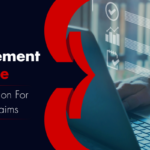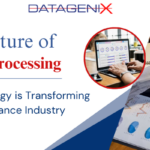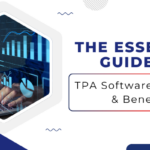Claims Software Systems: The Future of Smart Claims Handling
April 23, 2025
In the complicated world of insurance, fraud detection has become an essential component of claims management solutions. As technology improves, so do the strategies used by fraudulent actors, making it critical for the insurance sector to keep ahead of the cat-and-mouse game of detecting and preventing false claims. In this write-up, we will look at the development of fraud detection, specifically how powerful data analytics inside claims software are altering the business and protecting insurers from dishonest activities.
The Growing Challenge of Insurance Fraud
Insurance fraud is a costly and pervasive issue, affecting both insurers and policyholders alike. Fraudulent claims contribute to increased premiums, erode trust within the industry, and ultimately impact the overall cost of insurance. As fraudsters continuously refine their tactics, the need for sophisticated fraud detection mechanisms has never been more crucial.
1. Traditional Fraud Detection Challenges:
Traditional methods of fraud detection often rely on manual reviews and rule-based systems. While effective to a certain extent, these approaches are time-consuming, prone to human error, and struggle to keep pace with the evolving tactics of fraudsters.
2. Rise of Sophisticated Fraud Schemes:
Fraudsters are becoming more sophisticated, employing advanced techniques to exploit vulnerabilities in claims processing. From staged accidents to identity theft, the methods used to deceive insurers are constantly evolving, demanding a proactive and adaptive approach to fraud detection.
3. Financial Impact on Insurers:
The financial impact of insurance fraud is significant, leading to increased operational costs, higher premiums for policyholders, and, in extreme cases, threatening the financial stability of insurance companies. As a result, staying ahead in fraud detection is not just a matter of operational efficiency but a crucial factor in the long-term sustainability of the insurance industry.
The Role of Claims Software in Fraud Detection
Claims management solutions have emerged as the frontline defense against insurance fraud. Datagenix has come up with advanced system software that leverages the power of data analytics, artificial intelligence (AI), and machine learning to analyze vast datasets, detect patterns, and identify anomalies that may indicate fraudulent activities. Let’s explore the key ways in which our claims software contributes to the evolution of fraud detection:
1. Advanced Data Analytics:
Our claims software utilizes advanced data analytics to scrutinize large volumes of structured and unstructured data. By analyzing historical claims data, user behavior, and transaction patterns, the system can identify irregularities and potential fraud indicators that may go unnoticed by traditional methods.
2. Machine Learning Algorithms:
Machine learning algorithms within claims software can learn and adapt. These algorithms can recognize patterns indicative of fraud based on historical data, enabling the system to continuously improve its detection capabilities over time. This adaptive approach is crucial in combating the dynamic nature of fraudulent activities.
3. Predictive Modeling for Risk Assessment:
Claims software employs predictive modeling to assess the risk associated with each claim. By considering various factors such as claimant history, incident details, and external data sources, the system can calculate the likelihood of fraud and prioritize claims for further investigation.
4. Real-Time Monitoring:
Real-time monitoring is a key feature of claims software, allowing insurers to identify suspicious activities as they occur. This proactive approach enables swift intervention, reducing the potential financial impact of fraudulent claims and preserving the integrity of the claims process.
Success with DataGenix’s Advanced Fraud Detection Software
Datagenix has served multiple insurance companies to achieve faster results. Multiple Insurance companies in the insurance industry have faced increasing challenges with fraudulent claims. The insurance industry has adopted our advanced claims software solution, resulting in notable success:
- Increased Detection Rates: The utilization of advanced data analytics and machine learning algorithms significantly increased the detection rates of potentially fraudulent claims. The system could identify subtle patterns and anomalies that were previously undetectable.
- Reduced False Positives: Through continuous learning, the claims software minimized false positives, ensuring that legitimate claims were not unnecessarily flagged for investigation. This not only improved operational efficiency but also enhanced the overall customer experience.
- Enhanced Investigative Efficiency: The predictive modeling capabilities of Datagenix’s claims software allowed Insurance organizations to prioritize high-risk claims for investigation. This targeted approach streamlined the investigative process, enabling the company to allocate resources more efficiently and effectively combat fraud.
- Preserved Financial Integrity: By staying ahead in fraud detection, the Insurance company preserved its financial integrity. The reduction in fraudulent claims not only saved the company significant financial losses but also contributed to maintaining reasonable premiums for policyholders.
Future Trends in Fraud Detection within Claims Software
The evolution of fraud detection within claims software is an ongoing process, with several future trends set to shape the landscape:
1. Integration of AI and Natural Language Processing (NLP):
The integration of AI and NLP allows claims software to analyze unstructured data, such as text in medical reports or claim descriptions. This enhances the system’s ability to identify nuanced patterns and language indicative of potential fraud.
2. Blockchain for Secure Data Sharing:
Blockchain technology can facilitate secure and transparent data sharing among insurers. This collaborative approach allows for the swift identification of individuals with a history of fraudulent claims, creating a networked defense against repeat offenders.
3. Behavioral Analytics:
Behavioral analytics within claims software can analyze user behavior patterns and identify deviations from normal behavior. This approach is particularly effective in detecting insider fraud or collusion schemes that involve multiple parties.
4. Greater Integration with External Data Sources:
Claims software will increasingly integrate with external data sources, such as social media, public records, and government databases. Access to a broader range of data enhances the system’s ability to cross-reference information and detect inconsistencies.
Conclusion
As the insurance industry faces the evolving challenge of fraud, Datagenix’s claims software emerges as a powerful ally in the fight against deceptive practices. The integration of advanced data analytics, machine learning, and predictive modeling within claims software not only enhances the efficiency of fraud detection but also contributes to the financial integrity of insurers and the overall sustainability of the industry.
By unveiling patterns, analyzing data in real-time, and staying ahead of emerging fraud schemes, claims software solutions are transforming the way insurers approach fraud detection. As technology continues to advance, the future of fraud detection within claims software promises even greater precision, adaptability, and collaboration across the industry. In embracing these advancements, insurers position themselves at the forefront of a resilient and fraud-resistant insurance landscape.
How Health Claims Management Software Transforming The Industry?
February 7, 2025How Claims Software Can Transform Your Claims Process?
January 29, 2025The Need For Healthcare Claims Management Software
January 13, 2025Reasons You Should Invest in Claims Management Software
January 7, 2025The Essential Guide To TPA Software Features & Benefits
December 24, 2024Claims Management Software: Key To Streamlining Your Business
December 18, 2024How TPA Software Solutions Transformed Medical Claims Management?
November 20, 2024









